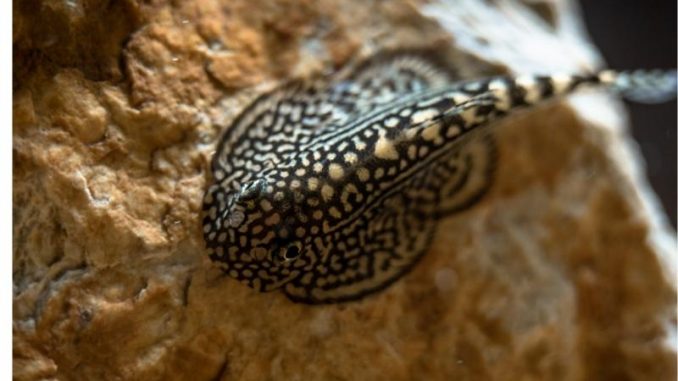
The hillstream loach is part of a family of calm, peaceful loaches native to fast-moving streams and rivers in Asia.
Hillstream loaches are small, with flat undersides and horizontal fins that give the fish the appearance of a miniature stingray. They are brown with beautiful dark brown and white mosaic-like markings on their bodies.
Because hillstream loaches are easy to care for, fascinating to look at, and compatible with most other fish, these fish are ideal additions to a tropical freshwater aquarium.
TABLE OF CONTENTS
Hillstream Loach Facts & Overview
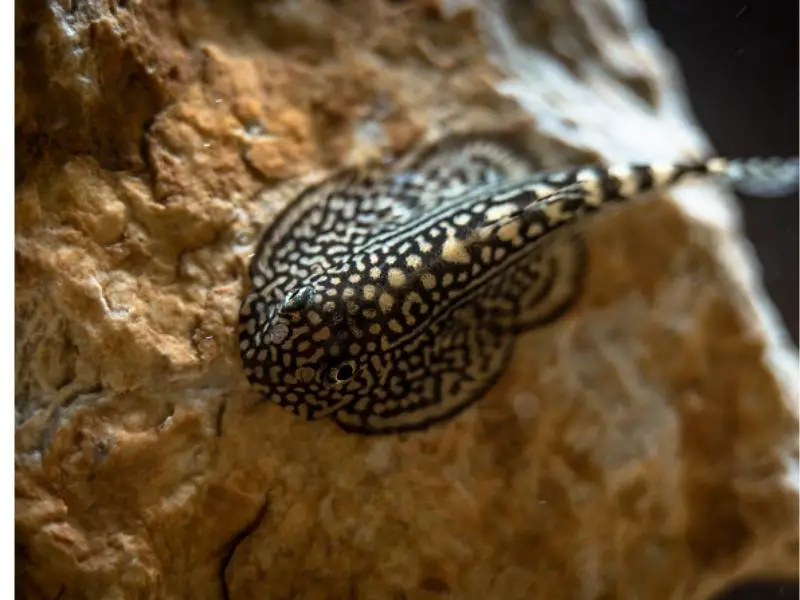
| Scientific name: | Sewellia lineolata |
| Common names | Hillstream loach, lizardfish, flossensaugers |
| Distribution: | Vietnam, Laos |
| Size: | Up to 2.5 inches |
| Life expectancy: | 8–10 years |
| Color: | Light brown with white and dark brown markings |
| Diet: | Omnivore |
| Temperament: | Calm, docile |
| Minimum tank size: | 55 gallons |
| Temperature: | 68–74°F (20–23°C) |
| pH: | 6.5–7.5 pH |
| Hardness: | 10-12 dGH |
| Care level: | Easy |
| Breeding: | Egg-scatterer |
Origin
The hillstream loach (Sewellia lineolata) originates from Vietnam and is found in fast-flowing rivers and streams in Quang Nam, Laos, Binh Dinh, Thua Thien-Hue, and Quang Ngai.
This fish is common in the wild and can be seen swimming in strong currents, gliding over smooth rocks, and climbing vertical surfaces.
The hillstream loach’s unique appearance and speedy swimming make this fish fun to watch.
Adult Size & Lifespan
Adult hillstream loaches reach 2.5 inches in length. Being small in size allows hillstream loaches to scavenge foods in crevices between rocks and plants on the riverbed. Males and females are the same size but females have a rounder body than males when viewed from above.
Hillstream Loaches live for up to eight years in the wild. With the right diet and water quality, hillstream loaches live in captivity for ten years or more.
Availability
Hillstream loaches are classed as “vulnerable” in the wild because the fish’s habitat is being destroyed by human destruction. However, these fish are some of the most popular and widely-available loach species for sale today.
You can find hillstream loaches in pet stores and online shops. Juvenile hillstream loaches cost $12–$15 depending on the location of the buyer.
Hillstream loaches that are sold on marketplaces like eBay are often cheaper. However, buying from a reputable breeder is safer than buying from an online marketplace because you can be certain that the fish was cared for properly.
Appearance & Behavior
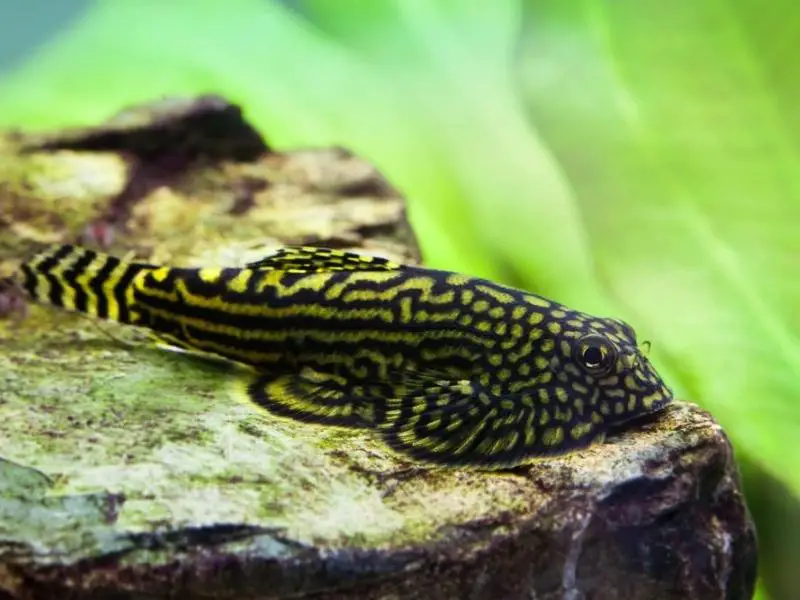
The hillstream loach is popular for its appearance. It has a streamlined shape, smooth body, wing-like pelvic and pectoral fins, and flat underside.
The underside of a hillstream loach works as a powerful ventral disc, enabling the fish to “stick” to surfaces in fast-flowing currents and climb vertical surfaces.
In captivity, hillstream loaches stick to the glass sides of glass aquariums.
Hillstream loaches are light brown with white spotting and dark brown or black stripes. These fish have few-to-no scales and sucker-type mouths.
You can distinguish between males and females by looking at the fish’s head formation.
Males have more pronounced heads than females, while females’ heads run into their pectoral fins, giving the fish a round appearance.
A stressed hillstream loach will lose its color. A female hillstream loach will become round and full-bodied during the breeding season.
Typical Behavior
As one of the most peaceful species of fish, the hillstream loach is suitable for community tanks and rarely shows signs of aggression.
Male hillstream loaches can be territorial and occasionally engage in belly-to-belly fights.
Hillstream loaches are fast swimmers and easily out-swim bigger fish in a shared tank.
These fish are naturally social and inquisitive, but hillstream loaches are shy around humans and will hide behind plants or inside caves when they sense human presence.
When a hillstream loach becomes comfortable in its environment, the fish will stick to walls and rocks in the tank, eating algae off these surfaces.
Hillstream Loach Care
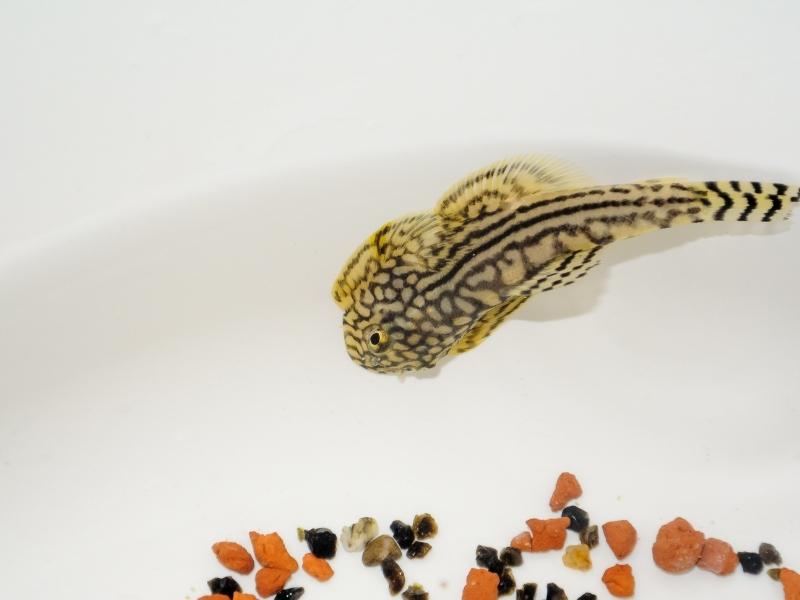
Hillstream loaches are easy to care for as long as these fish live in the right water parameters.
Replicating the fast-flowing currents in the hillstream loach’s natural environment will prevent the fish from becoming stressed.
As grazers and omnivores, hillstream loaches eat a diet of algae, biofilm, fish food, and live foods.
Disease
Because hillstream loaches are scaleless, these fish are susceptible to skin conditions. Hillstream loaches are also prone to common freshwater diseases.
Ich
Ich, otherwise known as ick or white spot disease, is characterized by a scattering of tiny white spots across the fish’s body and fins.
To treat ich, quarantine the affected fish in a separate tank and raise the temperature of the tank by two degrees to speed up the lifecycle of the parasite.
Skinny Disease
Skinny disease is a common bacterial disease that causes a fish to rapidly lose weight, even if the fish appears to be eating normally. Add a loach-safe antibacterial treatment to the tank to treat skinny disease.
Fungal Infection
Fungal infections are characterized by fluffy, white growths on the affected fish’s head, body, and fins. Substandard water quality and infected wounds are common causes of fungal infections.
To treat a hillstream loach with a fungal infection, add one tablespoon of fish salt for every gallon of water in the tank, or visit your local fish store for antifungal treatment.
Habitat and Tank Requirements
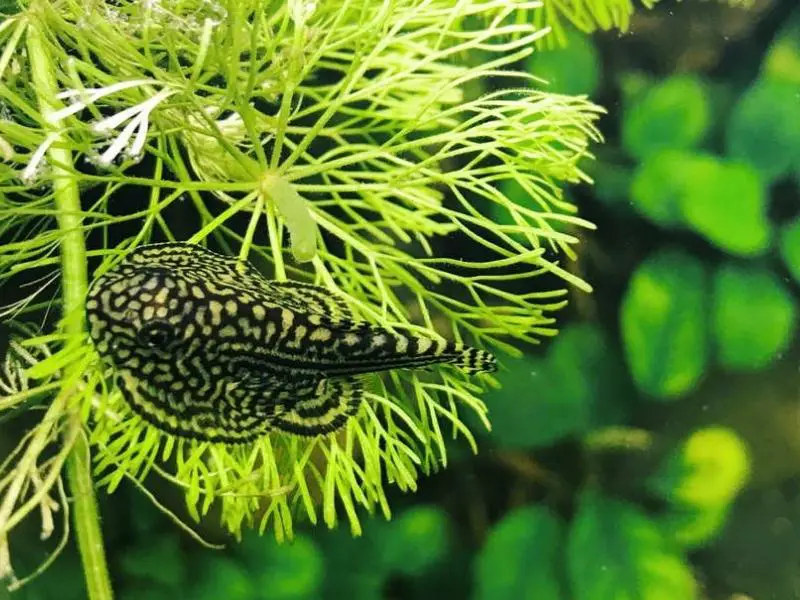
Hillstream loaches are accustomed to fast-flowing freshwater environments. The temperature, pH range, and water hardness should mimic their habitat as closely as possible.
You should only buy a hillstream loach if you’re committed to looking after this fish by maintaining the right tank setup.
Because hillstream loaches lack scales, these fish are intolerant to even the smallest water changes. Getting the tank’s parameters right will ensure your hillstream loach can thrive in your home aquarium.
Tank Conditions
A freshwater tank of at least 50 gallons is required for a hillstream loach. The tank should be long and rectangular, giving your hillstream loach plenty of surface area to explore along the bottom of the tank.
This surface area allows for fast water circulation and increases oxygen concentration. Look for a tank with dimensions of at least 52 inches in length, 24 inches in width, and 16 inches in height.
Temperature, pH Range, and Hardness
A water temperature of between 68° to 75°F is ideal for hillstream loaches. Hillstream loaches can survive for short periods in temperatures exceeding 75°F, as long as the water is properly aerated. However, exposure to high water temperatures can be fatal to the fish in the long term.
Water in the tank should be clean and well-oxygenated, with a fast flow. Change the water once a week to maintain the right environment for your hillstream loach.
Buy a power filter that replenishes the water at least 15 times per hour to mimic the fast currents of the fish’s habitat. Use a sponge or mesh intake to prevent hillstream loaches from wriggling into the filter.
The ideal pH range is 6.5 to 7.5, and water hardness should be medium, around 12 dH maximum. Use testing kits to ensure that ammonia levels remain at 0 ppm and that nitrate levels never increase beyond 20 ppm.
Substrate and Decorations
Hillstream loaches are bottom-dwelling and like to burrow and slide their undersides across the bottom of the tank. To prevent injury and allow for easy digging, choose a fine gravel or sand substrate.
Small pebbles and medium-sized smooth rocks are good tank additions. Ensure the tank has a tight lid to prevent hillstream loaches from scaling the tank’s glass walls and escaping.
Live plants provide a good hiding place for hillstream loaches and are essential for reducing the water’s nitrate content.
Some of the most suitable plants for a hillstream loach tank are water wisteria, java moss, dwarf aquarium lily, and crinum.
Smooth caves, old pieces of driftwood, and clay ornaments are good hiding places for hillstream loaches to hide.
Lighting
Make sure the tank gets enough light to encourage biofilm growth, which hillstream loaches eat. 40-watt tubes are ideal for a hillstream loach tank.
Hillstream loaches enjoy having plenty of dark spots to hide, so the tank’s light shouldn’t be too bright.
Tank Mates
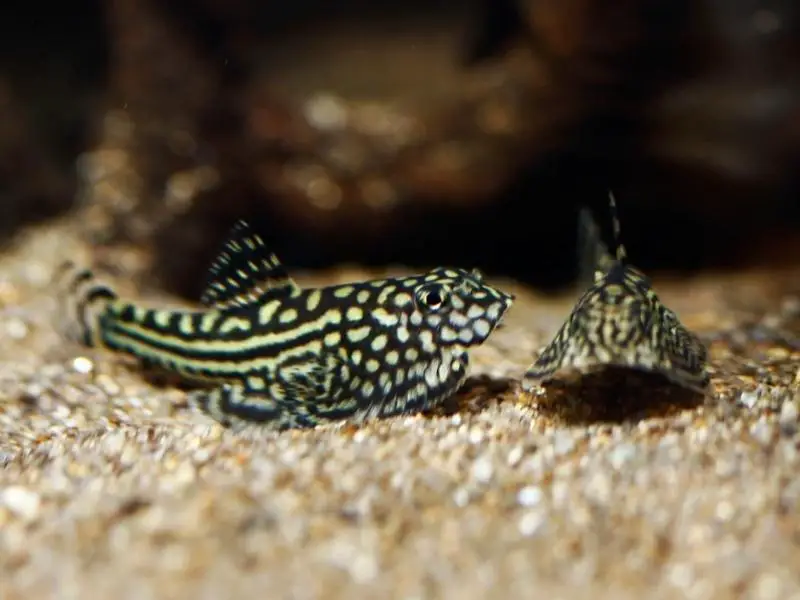
Hillstream loaches are compatible with the majority of fish. Most hillstream loaches spend the daylight hours latched onto the side of the tank or searching for something to eat. This species is unbothered by other species.
Don’t house several hillstream loaches together unless there’s enough space for the fish to have their own territories.
A crowded tank will cause the fish to harass each other over food and space. However, hillstream loaches become lonely when they’re housed alone, and a tank with enough space for six or more loaches is ideal.
The tank shouldn’t house aggressive fish species that are larger than hillstream loaches. Similarly-shaped, less dominant loaches should be avoided because these fish will be bullied by hillstream loaches.
Middle- or top-dwelling fish are the most suitable tank mates for a hillstream loach because the fish won’t invade the hillstream loach’s space. The best tank mates for hillstream loaches are listed below.
- Harlequin rasbora — All rasboras are compatible tank mates for hillstream loaches.
- Neon tetra — Neon tetras are good companions for a hillstream loach with a peaceful nature and preference for colder waters.
- Danio — Some bigger fish species will bully danios, so choose carefully if you plan to make other additions to your tank.
- Snails — Snails can play an important role in a freshwater aquarium, and they are no-drama tank mates for hillstream loaches.
- Dwarf shrimp — Some bigger fish eat dwarf shrimp, so you should only add dwarf shrimp to a tank with small fish.
Diet and Feeding
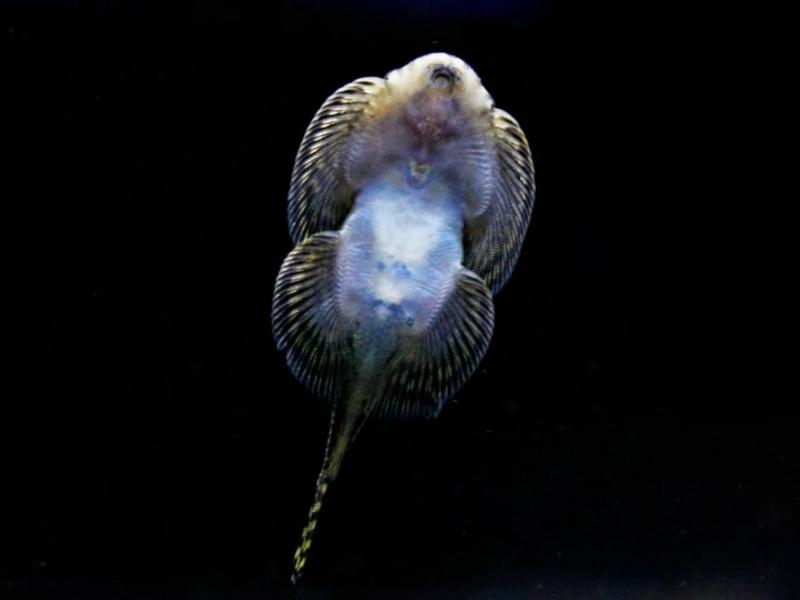
Hillstream loaches feed on biofilm, algae, aufwuchs, and the occasional insect larvae in the wild. You should feed your hillstream loaches similar foods in the aquarium.
Mature aquariums with lots of algae-covered rocks offer a good food source for hillstream loaches.
Kale leaves, spinach, raw cucumber slices, zucchini, and blanched lettuce leaves are foods that can be added to the tank during feeding.
If there aren’t enough algae in the tank, you can supplement a hillstream loach’s diet with algae wafers.
Although hillstream loaches don’t need a lot of animal protein, these fish still require meat once or twice per week.
Gel fish food, frozen and thawed bloodworms, brine shrimp, marine plankton, and insect larvae are good portion sources for a hillstream loach.
In tanks with a good source of algae, hillstream loaches require minimal food. Add a pinch of food to the tank per day and decrease this amount the following day if there’s leftover food.
Breeding
Hillstream loaches are difficult to breed. However, with enough preparation and the right tank environment, a patient, the knowledgeable aquarist can successfully breed a pair of hillstream loaches.
To prevent predatory fish from eating the eggs and fry, use a separate aquarium for breeding purposes only. Hillstream loaches are tiny after hatching, and you should cover pumps and filters in the tank to prevent the fry from being sucked into this equipment.
Follow the steps below to breed hillstream loaches:
- Place a healthy male and female hillstream loach in your separate feeding tank.
- Increase the temperature of the tank to 78°F and perform a cool water change to provoke breeding. Feed the fish an extra pinch of food.
- The male will chase the female, beginning a courtship. A favorable female will stay close to the male while the male digs in the substrate, building a nest.
- If the fish successfully mate, the female will release her eggs into the nest, and the male will fertilize the eggs with a fluid known as milt.
- The eggs incubate for a couple of weeks. Feed the fry when they hatch.
- Leave adult hillstream loaches in the tank if the fry is at least 5 mm long. If not, remove the adults.
- Move the fry to your main aquarium when the fry are large enough to be left alone by big fish.
Should You Get a Hillstream Loach for Your Aquarium?
You should get a hillstream loach for your tank if you’re looking for a unique fish and if you’re prepared to provide the exact tank parameters that this fish needs to thrive.
Hillstream loaches are well-suited to community tanks with other peaceful fish. However, you shouldn’t get a hillstream loach if your tank already contains dominant loaches or the bottom area of your tank is crowded.
Hillstream loaches are peaceful, entertaining fish that stand out in aquariums due to their unique appearance and tendency to stick to the side of the tank.
Despite having specific water requirements, hillstream loaches are beautiful, helpful additions to a home aquarium.

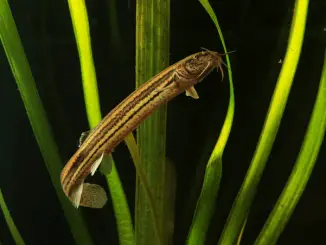
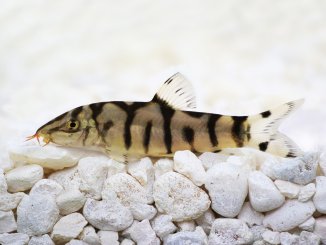
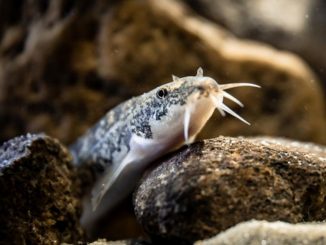
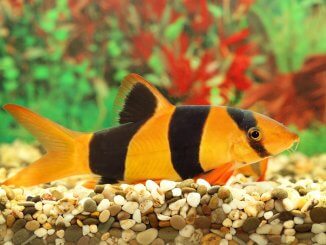
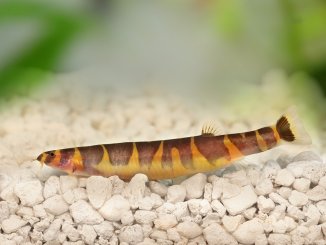
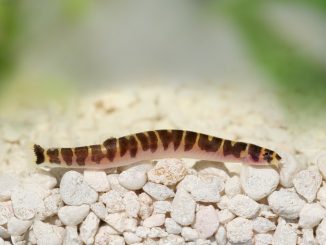
Be the first to comment